BoE left Bank Rate unchanged at 0.75% as widely expected. Asset purchase target was also held at GBP 435B. Both decisions were made by unanimous 9-0 vote.
BoE noted that near-term data have been “broadly in line” with projections in May Inflation report. However, “downside risks to growth have increased”. Globally, “trade tensions have intensified” and “contributed to volatility in global equity prices and corporate bond spreads”. Also forward interest rates in major economies “have fallen materially further. Additionally, “perceived likelihood of a no-deal Brexit has risen”, putting downward pressure on UK forward interest rates and Sterling exchange rates.
On growth, BoE now expects Q2 GDP growth to be flat. H2 underlying growth appears to have “weakened slightly” to “a little” below potential. On Inflation, BoE said core inflation “has remained slightly below” target. But job market “remains tight” and wage growth has remained at “target-consistent levels”.
BoE also reiterated that economic outlook depends significantly on Brexit, timing and nature, and new trading arrangement. Also, policy response to Brexit “will not be automatic and could be in either direction.
Full statement below.
Bank Rate Maintained at 0.75%
Our Monetary Policy Committee has voted unanimously to maintain Bank Rate at 0.75%. The committee also voted unanimously to maintain the stock of corporate bond purchases and UK government bond purchases.
The Bank of England’s Monetary Policy Committee (MPC) sets monetary policy to meet the 2% inflation target, and in a way that helps to sustain growth and employment. At its meeting ending on 19 June 2019, the MPC voted unanimously to maintain Bank Rate at 0.75%.
The Committee voted unanimously to maintain the stock of sterling non-financial investment-grade corporate bond purchases, financed by the issuance of central bank reserves, at £10 billion. The Committee also voted unanimously to maintain the stock of UK government bond purchases, financed by the issuance of central bank reserves, at £435 billion.
The MPC’s most recent economic projections, set out in the May Inflation Report, assumed a smooth adjustment to the average of a range of possible outcomes for the United Kingdom’s eventual trading relationship with the European Union and were conditioned on a path for Bank Rate that rose to around 1% by the end of the forecast period. In those projections, GDP growth was a little below potential during 2019 as a whole, reflecting subdued global growth and ongoing Brexit uncertainties. Growth then picked up above the subdued pace of potential supply growth, such that excess demand rose above 1% of potential output by the end of the forecast period. As excess demand emerged, domestic inflationary pressures firmed, such that CPI inflation picked up to above the 2% target in two years’ time and was still rising at the end of the three-year forecast period.
Since the Committee’s previous meeting, the near-term data have been broadly in line with the May Report, but downside risks to growth have increased. Globally, trade tensions have intensified. Domestically, the perceived likelihood of a no-deal Brexit has risen. Trade concerns have contributed to volatility in global equity prices and corporate bond spreads, as well as falls in industrial metals prices. Forward interest rates in major economies have fallen materially further. Increased Brexit uncertainties have put additional downward pressure on UK forward interest rates and led to a decline in the sterling exchange rate.
As expected, recent UK data have been volatile, in large part due to Brexit-related effects on financial markets and businesses. After growing by 0.5% in 2019 Q1, GDP is now expected to be flat in Q2. That in part reflects an unwind of the positive contribution to GDP in the first quarter from companies in the United Kingdom and the European Union building stocks significantly ahead of recent Brexit deadlines. Looking through recent volatility, underlying growth in the United Kingdom appears to have weakened slightly in the first half of the year relative to 2018 to a rate a little below its potential. The underlying pattern of relatively strong household consumption growth but weak business investment has persisted.
CPI inflation was 2.0% in May. It is likely to fall below the 2% target later this year, reflecting recent falls in energy prices. Core CPI inflation was 1.7% in May, and core services CPI inflation has remained slightly below levels consistent with meeting the inflation target in the medium term. The labour market remains tight, with recent data on employment, unemployment and regular pay in line with expectations at the time of the May Report. Growth in unit wage costs has remained at target-consistent levels.
The Committee continues to judge that, were the economy to develop broadly in line with its May Inflation Report projections that included an assumption of a smooth Brexit, an ongoing tightening of monetary policy over the forecast period, at a gradual pace and to a limited extent, would be appropriate to return inflation sustainably to the 2% target at a conventional horizon. The MPC judges at this meeting that the existing stance of monetary policy is appropriate.
The economic outlook will continue to depend significantly on the nature and timing of EU withdrawal, in particular: the new trading arrangements between the European Union and the United Kingdom; whether the transition to them is abrupt or smooth; and how households, businesses and financial markets respond. The appropriate path of monetary policy will depend on the balance of these effects on demand, supply and the exchange rate. The monetary policy response to Brexit, whatever form it takes, will not be automatic and could be in either direction. The Committee will always act to achieve the 2% inflation target.




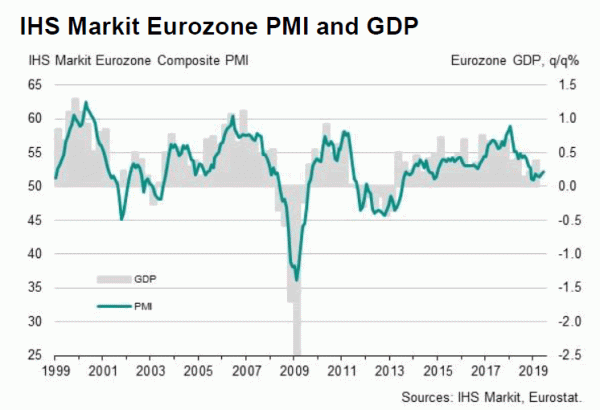
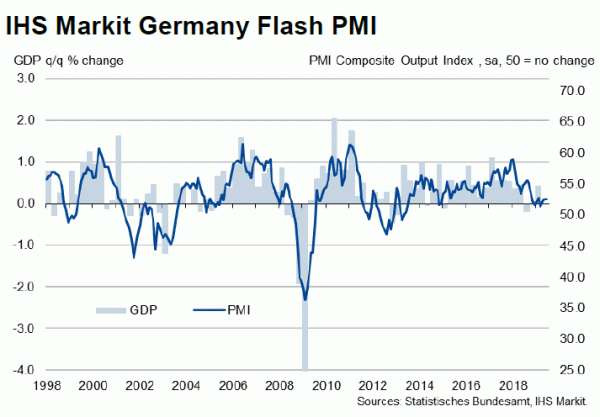
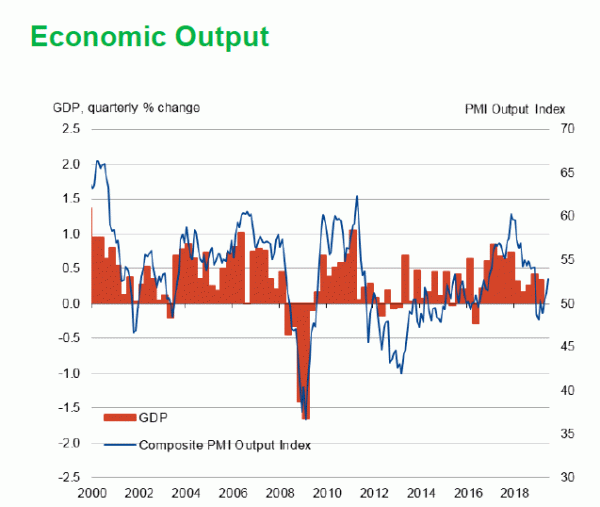
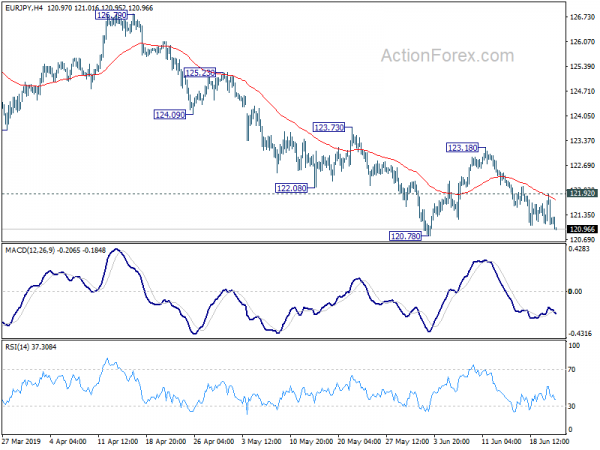
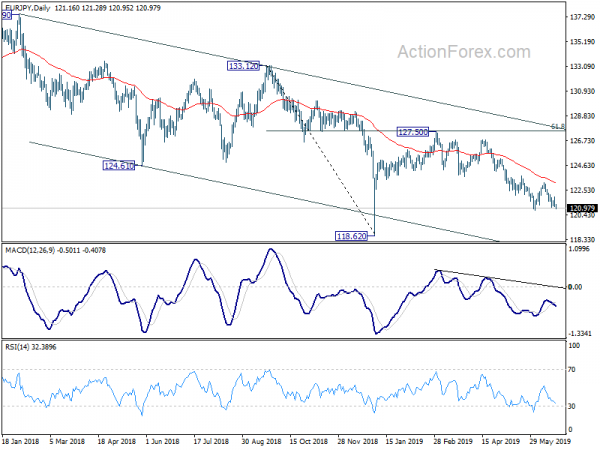
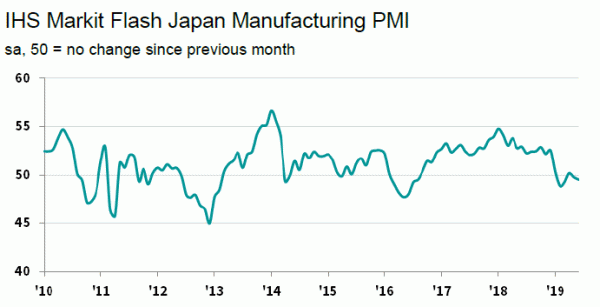
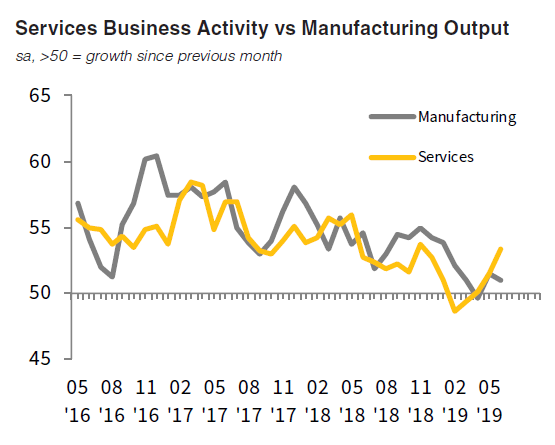
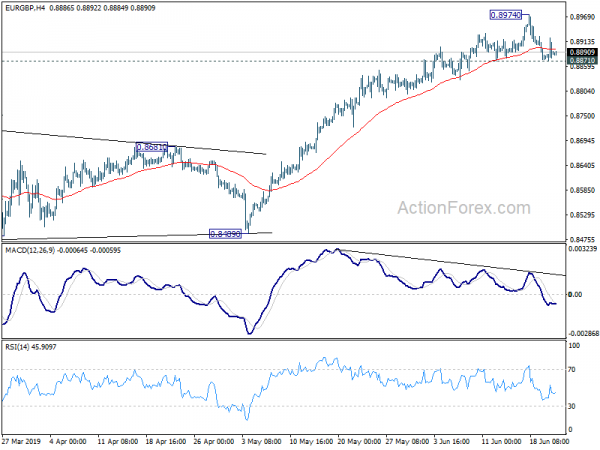
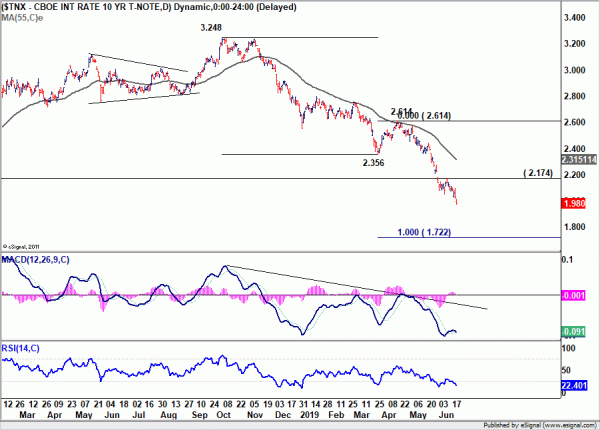
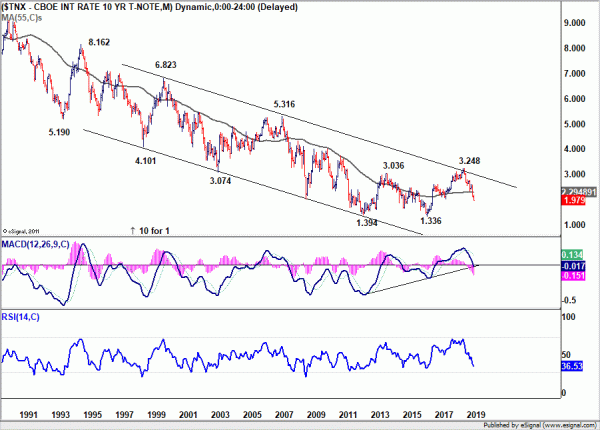
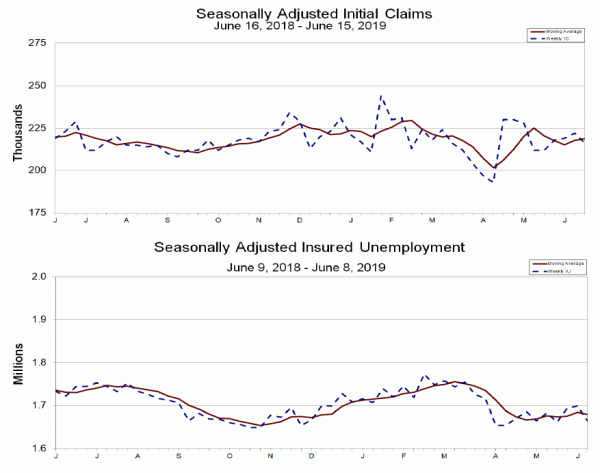
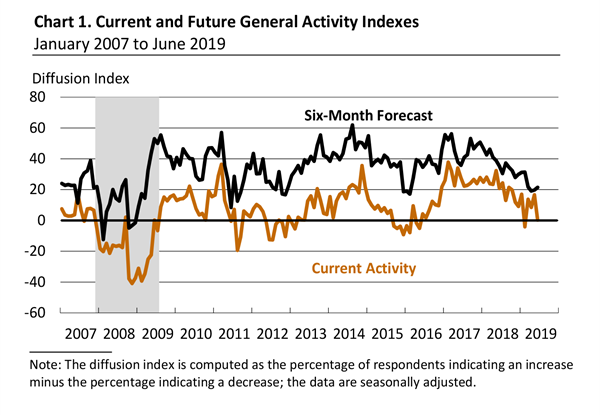
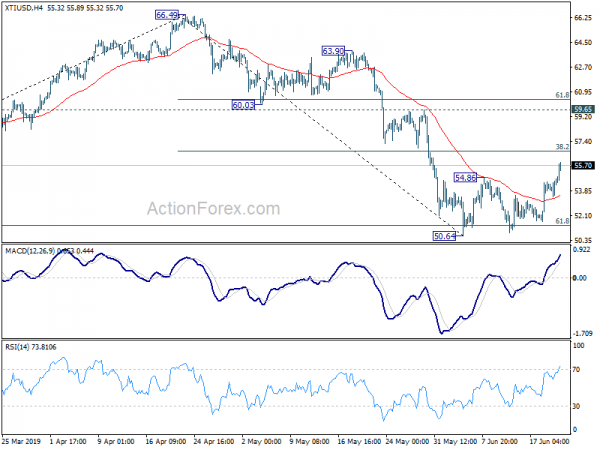
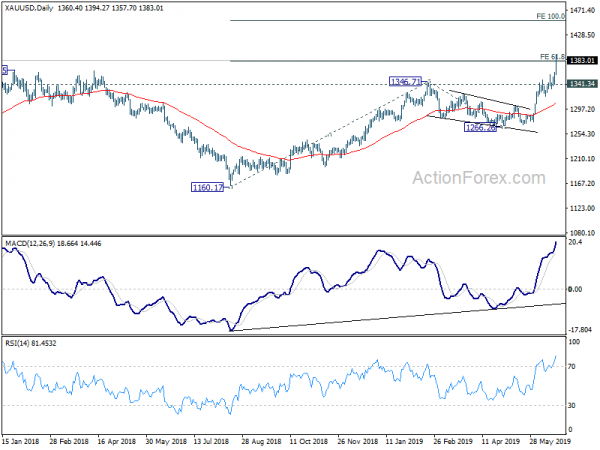
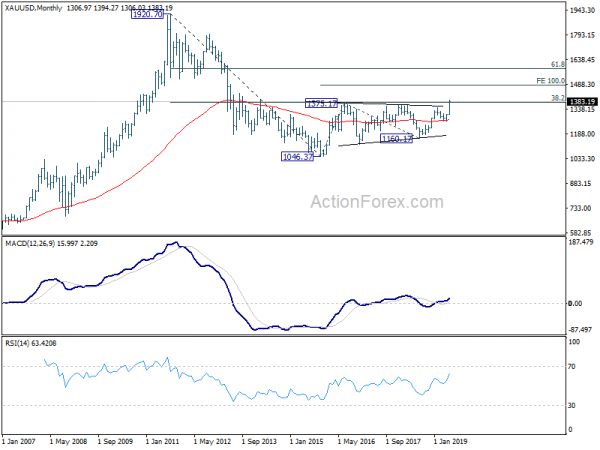
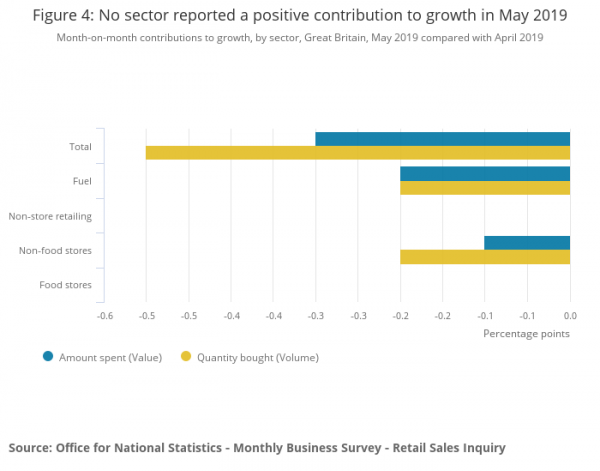
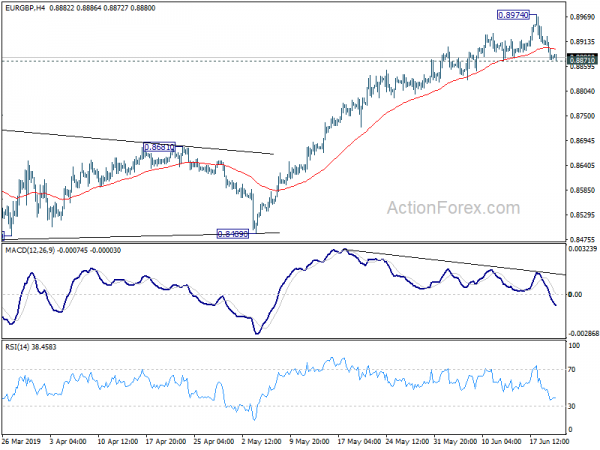
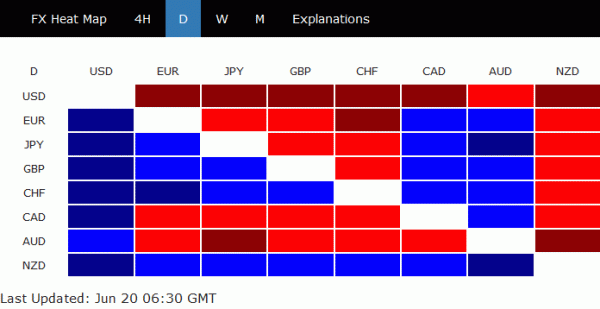
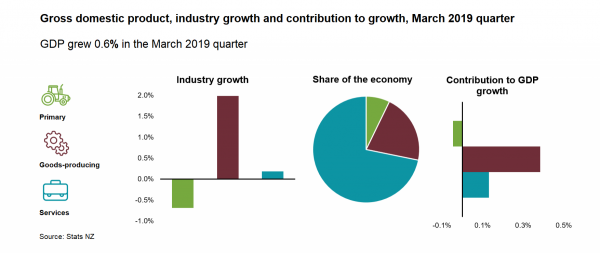
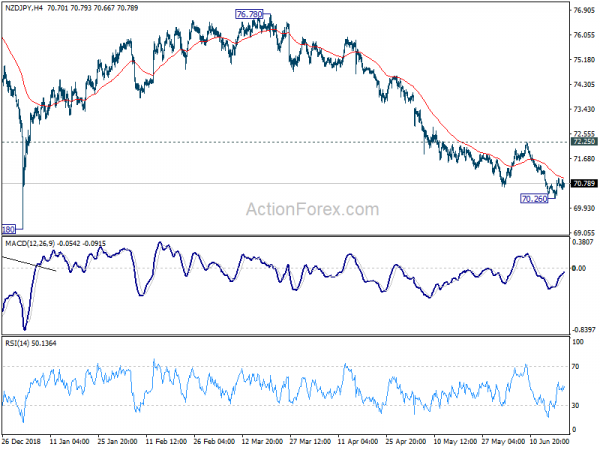

Canada retail sales rose 0.1%, ex-auto sales rose 0.1%
In April, Canada retail sales rose 0.1% mom, below expectations of 0.2% mom. Ex-auto sales rose 0.1% mom, also below expectation of 0.4% mom. Looking at some details, sales were up in 7 of 11 subsectors, representing 74% of retail trade. Higher sales at gasoline stations (1.2%) and food and beverage stores (0.4%) were the main contributors to the gain. Geographically, sales Ontario (0.9%) and Alberta (1.6%) continued their upward trend. Retail sales in Quebec (-1.3%) were down for the first time in 2019. In British Columbia, sales decreased -0.5%
USD/CAD turned into consolidation after hitting 1.3151. But there is no sign of bottoming yet. With 1.3257 minor resistance index, recent fall is expected to resume sooner rather than later to 1.3068 support next.